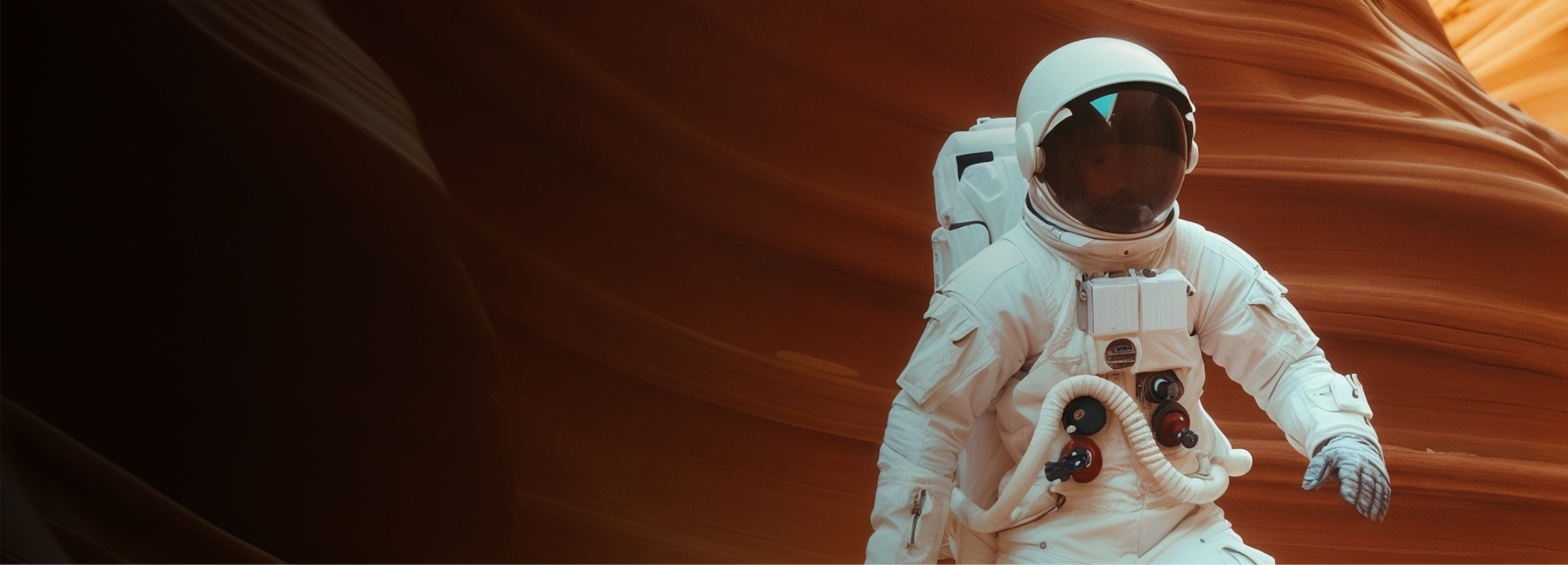4 Ways to Slash CAC Right Now—With Design Subscriptions

Traditional creative agencies bloat your CAC with inherent inefficiencies and poor practices. They hurt your ROI by drastically extending your time to market, waste your marketing dollars with insufficient or restrictive creative support, and bloat your project costs under the guise of "unexpected work".
Design subscriptions turn this dynamic on its head by putting the power in your team's hands. They fast-track your time to market, grant limitless access to critical creative assets and enable full pricing transparency.
You’ve got to spend money to make money. But must you spend so goddamn much?
Forgive the terseness, but we're all climbing out from a rough year. As we adjust to demands for “leanness” (Corporatese for “expecting great results with half the resources”), many businesses are watching customer acquisition costs (CAC) continue to grow. It costs time and money to bring new people through the door, neither of which are plentiful as they pick up the pieces from the recent downturn.
Anyone who’s come out the other end of a recession has learned that costs can’t be cut without slashing into performance as well. How can leaders reduce CAC without reducing outcomes?
One answer is a simple tweak to marketing: Design subscriptions over traditional creative agencies.
The Path to Lower CAC 🛣️
Why CAC Should Top Your Mind
Though it’s wise to guard your existing assets like china in a bull shop, clinging to what’s already yours isn’t a strategy for growth; only delay. And with customers widely dropping partners for the sake of their own bottom lines, it may not even be a strategy for getting through the downturn. You can only tread water for so long. Sooner or later, you’ve got to fashion a raft and get moving.
But that movement can’t happen if CAC is too high—you’ll start burning through cash too quick to see the fruits of your labor grow to more than a nub. This is where your marketing and creative teams come in.
There's a hole in marketing's money bag
When CAC is screamed from the mountaintops, it’s your marketing team who first answers the call. And in most areas, they do what they can to keep costs low.
Here’s the problem: Their professional services costs are too high. They need folks to take on the overflow of all the things they don’t have the time or capabilities for, but the inadequacies of their providers makes for a lot of waste.
Most often, the culprits of high marketing CAC are the agencies your design and marketing teams have on retainer; the ones supplying the ad design, videos, motion graphics and all the other things that make your business worth a moment’s thought to prospects. Nearly 20% of marketing’s budget goes down this pipe, and for reasons that’ll come to irk you shortly, it is a broken pipeline.
Here’s how you, dear leader, can significantly lower customer acquisition cost right now with design subscriptions.
1. Stop Hand Holding
Many marketing and design teams—“creative marketers” we’ll call them—have a lot of issues with their traditional creative agencies, each of which jacks up the cost of acquisition.
Over 20% of creative marketers say their biggest problem with their creative agency is the long time spent coming up with concepts in the first place. Almost 30% of them say their biggest problem is the long time spent refining said creative.
What does this do to your CAC? Well, for a supposed “creative” team, the inability to be creative when needed is quite a handicap. Earning a prospect’s attention (and their dollar) depends on your team’s ability to distinguish the business visually, and to do so at a quick and consistent rate. The creative must perform, and must do so every day to remain top of mind for your audience.
Traditional agencies demand you acquiesce to their model of operation. Failing to properly integrate, they’ll never be the brand experts your team needs them to be.
With that lack of expertise comes sluggishness. Bound by their own limitations (one designer per client, inflexible hours of work, rigid hours of operation/contact, restrictive policies around revisions/iterations etc.), they can’t help but slow you down.
Creative marketing team needs help, but the hand holding these agencies demand is a huge drain on time and money.
How to do it
For this and many other reasons we’ll soon get to, many businesses are now scrapping the agency model in favor of a Creative as a Service (CaaS) partner. It’s a design subscription service that gives your and marketing teams 24/7 access to every creative service they need in the form of a dedicated team.
Where the traditional agency model is project-based and rife with inconsistencies that cut into your bottom line, CaaS partnerships enable the frictionless exchange of just-in-time, high-performing creative that snaps onto your existing model.
How does this lower CAC? Well, where traditional creative agencies bloat acquisition costs with tedious and outdrawn workflows, design subscriptions fast-track your time to market.
They’re able to pump out each new piece of messaging out the door rapidly. From from static and social ads, to videos, to motion graphics, to landing pages, to AR, to presentations and much more, not getting stuck in rigid agency workflows means faster returns.
Beyond this, by not spending time going back and forth to get your attention-strapped agency to understand your team’s highly specific needs, both your team and your CaaS partner buy back countless hours to spend on more revenue-generating work.
Think about your CAC
Having a team that’s aligned with your own reduces significant marketing waste, and buys back time to be spent on more value-adding tasks.
2. Review Professional Services
While some traditional creative agencies may seem inexpensive, they charge a lot for relatively little output. Most often, they give your team a single overworked designer, whose hectic schedule and multitude of clients means they’re frequently struggling to keep up with your team’s demands for performance.
Taking on all of your creative marketing team’s overflow requires more than one underslept designer if marketing is to move the needle more than a millimeter. The problem is, they don’t have the money to staff an entire auxiliary team. So, rather than squeeze every ounce of juice from a fully stocked creative team, they hock precious marketing dollars at an agency whose sole assignee can only eke out creative assets according to their own schedule.
Marketing falls short again. CAC increases, without the resulting customers to show for it.
How to do it
You don’t need a single designer, and that single designer doesn’t just need a coffee. If your marketing team is going to compete in this swim-fast-or-sink-faster digital market, you need a dedicated team. And if it’s going to reduce your CAC, it can’t be more expensive than hiring a single designer.
And it isn’t. Design subscriptions cut the CAC by giving your creative marketing team a support team of their own; dedicated to embedding themselves within the brand and taking on any of the 200+ tasks that can’t currently be dealt with by your in-house designers.
Where agencies increase CAC by charging you moderate-to-severe fees for a single designer with a million restrictions on their capacity, CaaS partners reduce your CAC by giving you a full team of vetted brand experts for the price of one designer. And having a full, affordable design team at your disposal does much more to drive customer acquisition than one overstretched designer.
Think about your CAC
Agencies most often just give you one overworked designer at a time. CaaS means getting a fully-stocked design team for the price of hiring a single designer, increasing acquisition while reducing CAC.
3. Demand Transparency
Speaking of marketing grudges, many creative marketers say the lack of pricing transparency is their biggest agency pain point.
It’s a common agency sin, and it’s growing your CAC needlessly. With their per-project model, they permit themselves to drum up figures for each individual project based on the work they say it’s taken them to get it done. Here’s the kicker: They know how much a project is going to run your team when it’s done, but agencies almost always tack on additional fees to cover “unforeseen expenses”. They’re only pretending your team exceeded work expectations so you don’t get legal on them.
They attract your team with ambiguous quotes, agree to “flexibility” to account for the unforeseeable, then drop a bigger, possibly bloated number on the invoice. It happens so often that most marketing teams come to accept it as necessity, rather than dishonesty or poor practice.
And you’d better believe those fattened bills are affecting your CAC.
How to do it
Who would guess that the solution to obfuscation is total transparency? You did, probably. Moving away from the traditional agency model means slashing the costs and headaches associated with their ambiguous pricing plans and inflated invoices.
Partnering with a CaaS provider enables full transparency. Your team will always know what you’re spending, and through the shared project dashboard, they’ll always know what their brand experts are working on.
There’s literally no room for budgetary bloat with a design subscription.
Think about your CAC
The hidden fees agencies depend on are killing your marketing budget, and raising your CAC in the process. Take the reins back with the transparency design subscriptions mandate.
4. Demand Flexibility
If you’re not at least a bit irritated at this point, let me commend your constitution. At the same time, rest assured that these problems are headaches for your creative marketing team—costly ones, at that.
And there’s no greater headache than stubbornness. Of the major problems, 34% of creative marketers said the biggest pain they have with their creative agency is the inability to make changes to creative without having to pay more for it. Because of the contractual/project-based nature of most agency relationships, anything that’s not in the contract is deemed an “additional request”; with fees and procedural roadblocks to follow.
And that’d be fine if your creative agency knocked it out of the park on the first try. But for reasons mentioned above (see the point about hand holding), that’s rarely the case. It’s the nature of the work that it’s not always going to be flawless on the first try, and agencies know this when they sign your team up.
Many, if not the majority of agency projects will end up over budget or expectation. And going over budget is CAC’s worst enemy.
How to do it
Demand better from your creative team’s partner. Crafting the most compelling creative asset possible in every case requires the capacity to pivot along the way, without paying out the ass for every subsequent change.
Under a design subscription model, modifications and iterations can be unlimited at no additional cost—it just depends on how your team chooses to spend its many allotted design hours each month. To boot, up to 50% of the projects your team chooses to outsource can be “fast turnaround” projects, completed and out the door in 12 or 24 hours. With their stringent contracts and limited resources, traditional agencies simply can’t compete.
Think about your CAC
The less money your marketing team spends getting assets to market, the lower your CAC will be.
Cut the CAC With Smart Design
Recession veterans have come to learn that cost-cutting comes at the expense of results. And really, who can blame them? The “tried and true” methods of cost reduction—layoffs, budget cuts, restructurings (layoffs)—can’t help but produce stagnation; the endless chasing of one’s tail.
Being clever about how you leverage your design and marketing teams reduces CAC without the usual drawbacks. On the contrary, it’s shown itself to drive down costs by maximizing creative output, fast-tracking time to market and maintaining budget transparency.
Many marketing and design leaders already know too well the cost of the classic agency model, bloated ad spend and campaigns that don’t perform. It’s why so many of them have shifted or considered shifting to the CaaS model: Marketing delivers on its performance goals without burning through its budget. But they can’t do it without support from the larger leadership team.
Creative and marketing teams need leadership to understand the connection between their design model and their CAC. Just as ineffectual design ecosystems are often the problem, scalable design ecosystems are the solution.
David is a Senior Content Marketer at Superside. A former journalist with bylines too numerous to enumerate, he brings his love of storytelling and semantics to the marketing world. Recognizing the sizable gaps in the creative-as-a-service (CaaS) sector, he jumped at the chance to fill the creative void for ambitious brands. In his off hours, he enjoys loud music, making vegan meals and being made fun of for making vegan meals. He’ll gladly talk to you about any of the above on LinkedIn.
You may also like these

The Best Graphic Design Software and Tools for 2024
Trends suggest that graphic design software and tools are now a must-have for designers and non-designers alike. That means creating stunning graphic designs for your websites, landing pages, and social media platforms is no longer a debate—it’s a requirement.Graphic design is ever-evolving and has astounding potential. It has transformed how we engage with our audience through visuals and allows brands to explore a variety of themes, topics, and color palettes that redefine our virtual and physical experiences.What we'll coverWhat are Graphic Design Tools and Software?How to Choose the Right Design Software
We Tried an Out-of-Home Ad Campaign. Should You?
No one targeting big tech bothers with out-of-home ads anymore. Why would they? Their targets’ most noteworthy hangouts are defiantly digital, save for the odd convention—a good chunk of which is spent staring at screens, anyway.It begs the question: Why, for the love of god, did we pour money into smearing our branding along billboards, bus stop ads, rideshare vehicles, coffee trucks and airport banners across San Francisco this summer?And how did this campaign result in a 140% increase in call requests, and a 77% increase in direct traffic from California over the last year?Why We Did ItBecause most businesses like ours aren’t doing it. Working in creative marketing for as long as we have, we’ve picked up a time-honored trick: Look at what your competitors are doing, and do the opposite.
Want to Boost Brand Awareness and Lower CAC? Unleash the Power of Your Creative
🔥Spoiler alert🔥: Marketing is complicated. While the primary goal is connecting with customers, you also need benchmark metrics to account for where you’re investing your dollars and what you’re getting in return. Thank you, free market.Enter the Stereotypical Barbie of the metrics world—customer acquisition cost (CAC). This neat and tidy equation adds the total cost of all sales and marketing efforts, dividing them by the total number of customers acquired.However, just like body image standards, the drama comes from trying to lower your CAC. The less you spend to earn each customer, the more glamorous your bottom line. 🙌 A notoriously difficult cast member, math is an unavoidable part of the marketing world. But, in a Hollywood-level plot twist, your marketing creative is your superpower. The kryptonite to indifference, engaging ads and content generate positive vibes for your brand, helping you earn more customers and… drumroll 🥁 lower CAC.










